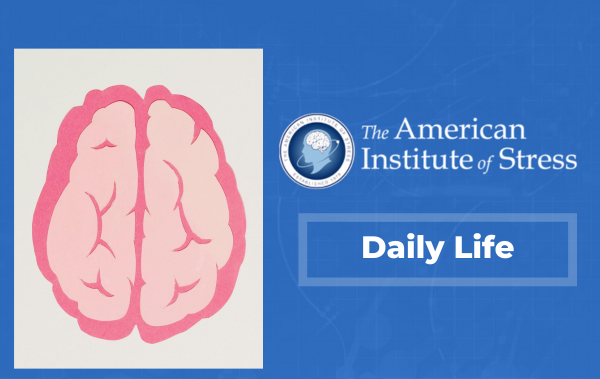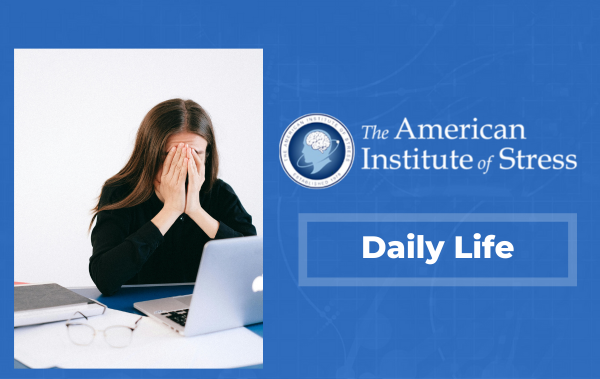 The mental health epidemic remains a growing concern around the world. It affects more than just how one thinks, feels and behaves, but also how they handle stress, relate to others and make decisions. According to the American Psychiatric Association, one in five adults struggle with mental illness but view these struggles as a personal flaw rather than a mental health issue. As a result, they go untreated and cost the global economy $1 trillion each year due to lost productivity.
The mental health epidemic remains a growing concern around the world. It affects more than just how one thinks, feels and behaves, but also how they handle stress, relate to others and make decisions. According to the American Psychiatric Association, one in five adults struggle with mental illness but view these struggles as a personal flaw rather than a mental health issue. As a result, they go untreated and cost the global economy $1 trillion each year due to lost productivity.
Despite the negative, insensitive and often unrealistic stereotype Hollywood has portrayed, less than 5% of people experience severe mental illnesses like schizophrenia or bipolar disorder. In fact, anxiety is the most common mental illness impacting 40 million adults in the United States. Although highly treatable, the Anxiety and Depression Association of America reported: “only 36.9% of those suffering are receiving treatment.”
While mental health programs are plentiful across workplaces, they’re often expensive and inaccessible making them go unused. The Employee Assistance Program (EAP) was designed to help employees navigate challenges in their personal and professional lives, yet less than 7% of employees use them. When employees participate in an EAP, more than 90% reported that the program helped them manage their work-life balance. The International Journal of Health and Productivity disclosed employees showed improvements in work engagement, life satisfaction, and presenteeism and a decrease in absenteeism and workplace distress.
Here’s how companies can maximize the effectiveness of their EAP and foster an open and inclusive culture that supports mental health.
Human resources should not be the only one leading the initiative to promote an EAP. Everyone from management to executive leadership plays a key role in eliminating stigmas and bringing awareness to the program. Awareness starts during onboarding. Instead of a quick one-sentence introduction to the benefit from HR, leaders should be hands-on in making sure employees feel safe, comfortable and aware of what’s available to them.
According to the American Institute of Stress (AIS), 80% of employees admitted to being stressed and not knowing how to handle that stress. Senior executives who participated in a recent Accenture study commented that younger workers are not often well equipped to handle everyday work stresses and lack the experience and coping strategies that their senior colleagues have learned.”
Unbeknownst to many, when chronic stress is left untreated, it increases the risk of developing depression or anxiety. The EAP is in place for this exact reason, to help employees work through their life challenges and learn better stress management techniques.
However, most employees are reluctant to take advantage of its services because of the lack of communication and education around it. Additionally, 78% of American workers are already living paycheck to paycheck. If they don’t understand this is a free or subsidized benefit, they’ll assume they’re responsible for the entire cost making them forgo it altogether. As a result, employers lose $225.8 billion or $1,685 per employee due to loss of productivity and absenteeism.
Maintain A Proactive Rather Than Reactive Approach
The biggest myth around an EAP is that it’s only available for individuals during extreme mental or emotional distress, similar to a crisis hotline. Subsequently, employees shy away from learning more because of the stigma attached to mental health and the fear their need for assistance will hurt their position and reputation at the company.
What most employees don’t realize is an EAP is a voluntary employer-sponsored program that offers confidential services to help employees with short and long-term problems in both their professional and personal lives. Some common problems might include alcohol and drug abuse, stress, grief, family problems, financial problems, workplace conflicts, health management, depression, anxiety and anything that affects the emotional and mental health of an employee.
In addition to frequently communicating the availability of the EAP, HR should be proactive in letting employees know that mental health is protected under the American Disabilities Act. This means they’re eligible for reasonable accommodation should they need one. If employers aren’t promoting these benefits, employees will continue to suffer hindering their ability to do their job.
To best communicate the benefits of the program, it’s recommended that HR, management, and leadership try it out for themselves. This will give them a better understanding of what the program is about and more confidence in advocating for it. Employers shouldn’t limit wellness benefits solely to the EAP but should also encourage the use of apps, tools and strongly consider investing in other wellness benefits.
The second-year #1 Best Workplace in the Bay Area winner, Asana, is committed to fully investing in their employee’s wellness to make life easier and less stressful for them. Aside from their EAP, their extensive wellness program includes a nap room, daily yoga, free gym memberships, mentor programs, executive coaching, wellness workshops, nutritious meals and unlimited paid time off.
The reality is, not every company is able to heavily invest in additional wellness benefits. Some low budget alternatives could be creating an open discussion with a lunch and learn, hosting a workshop, promoting wellness events and fairs, creating a walking club or encouraging mental days to name a few.
Reinforce Its Commitment To Confidentiality
The shame of needing help is still a challenge even as millennials change the way people look at and think about mental health. A recent survey found 79% of employers indicated they offer an EAP, however, it remains an underused benefit. Most employees fear their employer or manager would receive feedback from the program putting their job in jeopardy due to them needing assistance.
Vida Thompson, a career coach at Flourish Career Consulting, explained: “confidentiality is an extremely important part of how the EAP operates.” She further explained, “it does not report on or communicate any employee’s personal information to the employer.” The only information communicated back to the employer about its usage is the number of employees the program assisted, the types of services provided and the number of hours used. This data is only provided to show the program is being used and does not report on any personally identifying information.
Creating a culture of support is a top-down process. Leadership, HR, and management must work together to emphasize the benefits and confidentiality of an EAP. When there’s a supportive and open culture around mental health, everyone thrives.
EY (formerly known as Ernst and Young) has a long-standing mission to create a culture where employees feel included and safe. The global consultancy launched their EAP, We Care, to increase mental health awareness and encourage employees to reach out for help without fear of it affecting their job.
EY leaders spearheaded the initiative and started speaking out about their own mental health struggles to remove the stigma and start normalizing the issue. Their efforts have been paying off with a reported 32% increase of employees who have used their We Care program.





